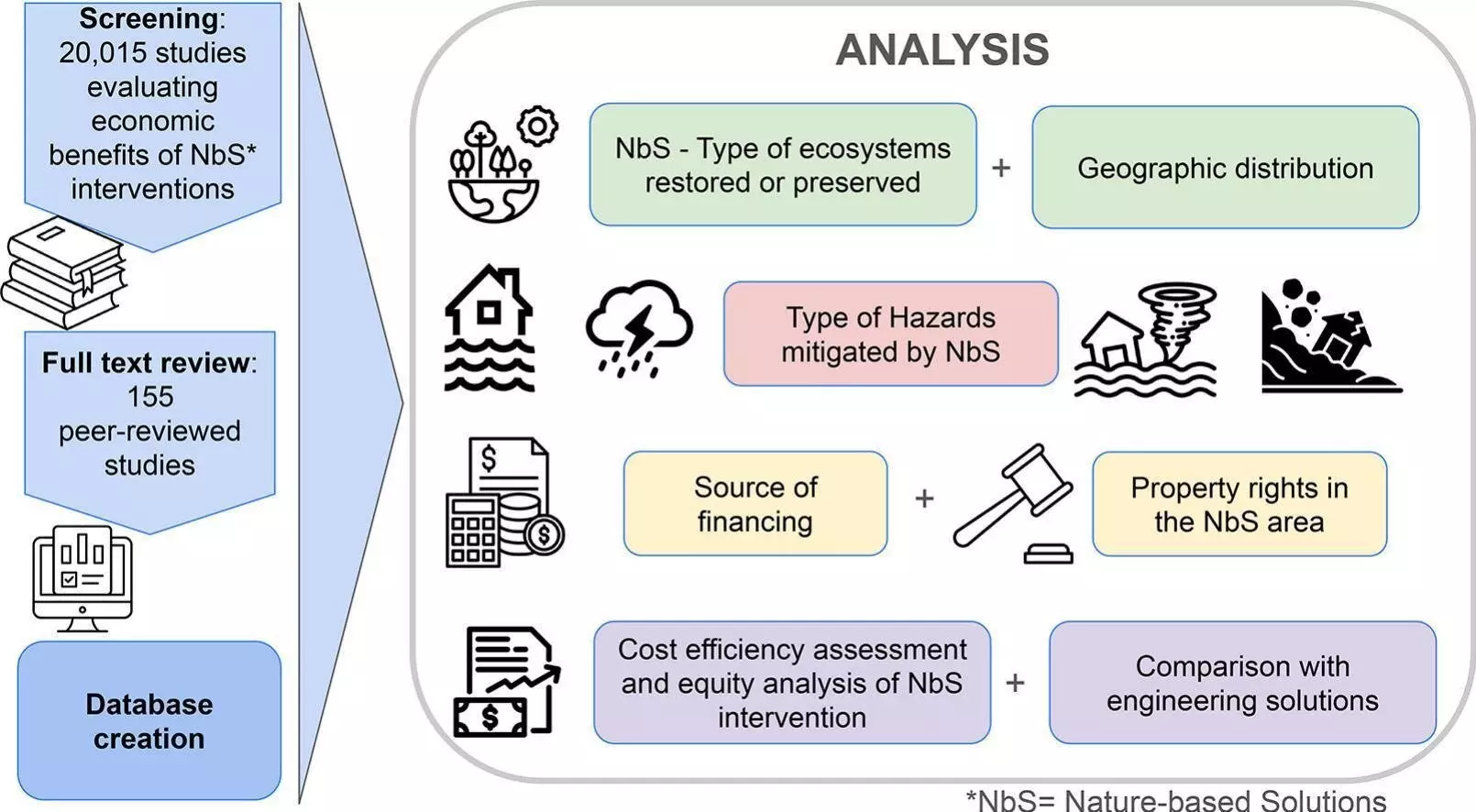Nature-based solutions (NbS) have emerged as a powerful and cost-effective method to mitigate risks associated with a wide range of disasters, such as floods, hurricanes, heat waves, and landslides. These solutions involve preserving, sustainably managing, or restoring ecosystems to provide benefits to both society and nature. NbS have gained recognition in major national policies and international agreements as effective tools to combat climate change. However, there has been a lack of scientific knowledge regarding the cost-effectiveness and equity outcomes of NbS.
A recent global assessment led by researchers at the University of Massachusetts Amherst revealed that NbS are not only economically effective in mitigating hazards but also their benefits are underestimated. The study found that NbS were consistently cost-effective in mitigating hazards in 71% of more than 20,000 peer-reviewed studies. In addition, 24% of the studies found NbS to be cost-effective under certain conditions. Ecosystem-based interventions associated with mangroves, forests, and coastal ecosystems were found to be particularly effective in hazard mitigation.
Comparative studies between NbS and engineering-based solutions showed that NbS were more effective at mitigating hazards in 65% of the cases, with another 24% being partially more effective. None of the studies found NbS to be consistently less effective than engineering solutions. This highlights the potential of NbS as a viable alternative or complementary approach to traditional engineering solutions in disaster risk reduction.
While the hazard-mitigation benefits of NbS are well-documented, the study emphasized that many studies fail to consider the added environmental and socioeconomic benefits of NbS. These include maintaining biodiversity, climate mitigation, and supporting underserved communities. However, quantifying these additional benefits can be challenging and often leads to their underestimation. Factors such as improvements in air quality, protection of endangered species, and cultural value of environmental assets are difficult to quantify but hold immense significance.
One of the key findings of the research was that NbS have been predominantly financed by the public sector, even when involving private property. To maximize the global impact of NbS, additional funding is necessary, with a significant share coming from the private sector. A transformative upscaling of NbS requires a collaborative effort between public and private financing to ensure the widespread implementation of nature-based solutions for disaster mitigation.
Nature-based solutions have proven to be not only effective but also cost-efficient in mitigating a variety of hazards. By recognizing and maximizing the benefits of NbS, policymakers, researchers, and stakeholders can work towards a more sustainable and resilient future in the face of climate change and increasing disaster risks.


Leave a Reply